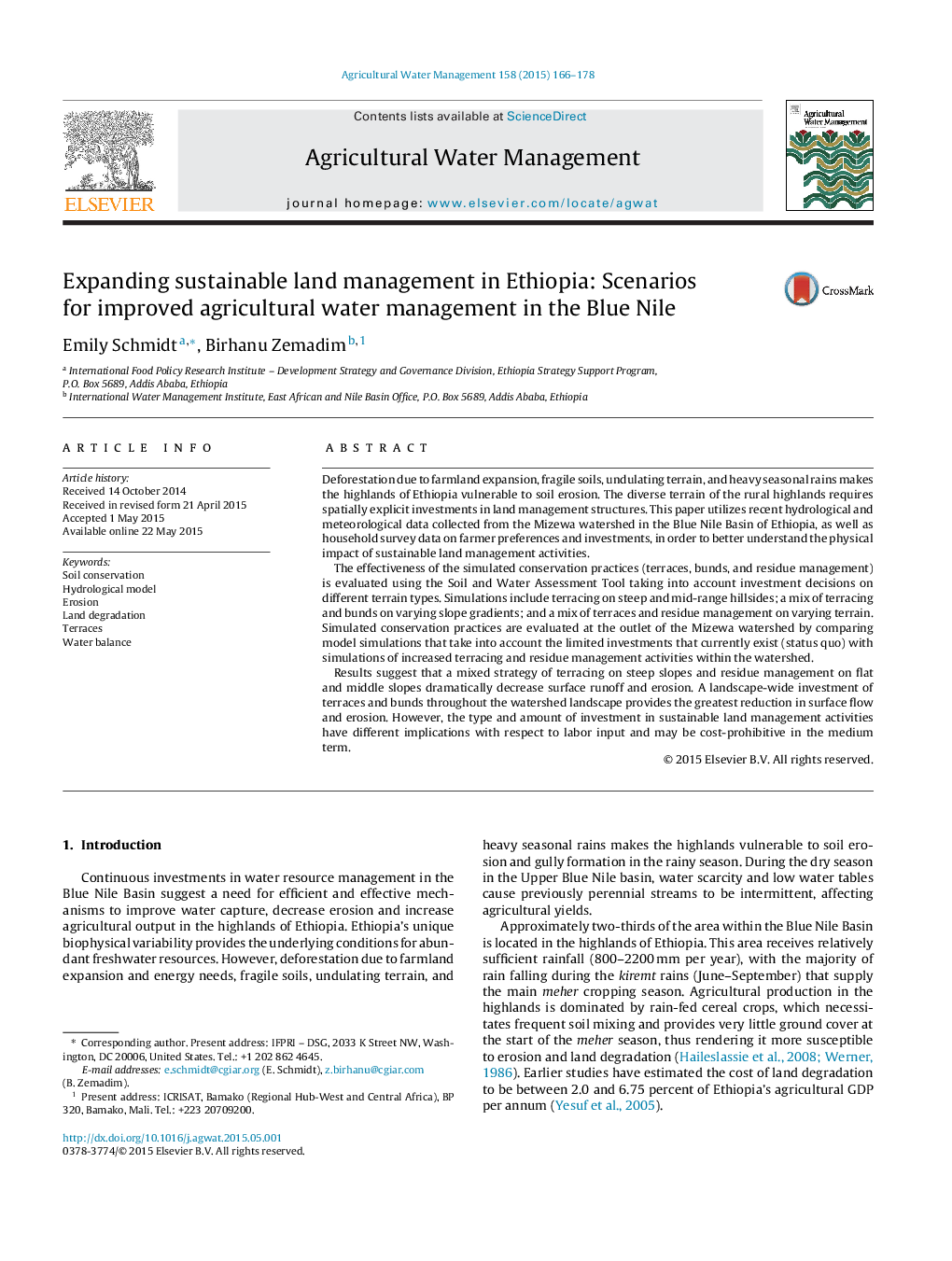| کد مقاله | کد نشریه | سال انتشار | مقاله انگلیسی | نسخه تمام متن |
|---|---|---|---|---|
| 4478432 | 1622921 | 2015 | 13 صفحه PDF | دانلود رایگان |
• Recent hydrological data are used to simulate soil conservation investments in Ethiopia.
• A micro-watershed model takes into account investments on different slopes and terrain.
• Household survey data assesses farmer preferences and current magnitude of investments.
• Terraces and bunds on varying slopes best reduce erosion in the study watershed.
• Investments have different implications due to labor input and use of agricultural land.
Deforestation due to farmland expansion, fragile soils, undulating terrain, and heavy seasonal rains makes the highlands of Ethiopia vulnerable to soil erosion. The diverse terrain of the rural highlands requires spatially explicit investments in land management structures. This paper utilizes recent hydrological and meteorological data collected from the Mizewa watershed in the Blue Nile Basin of Ethiopia, as well as household survey data on farmer preferences and investments, in order to better understand the physical impact of sustainable land management activities.The effectiveness of the simulated conservation practices (terraces, bunds, and residue management) is evaluated using the Soil and Water Assessment Tool taking into account investment decisions on different terrain types. Simulations include terracing on steep and mid-range hillsides; a mix of terracing and bunds on varying slope gradients; and a mix of terraces and residue management on varying terrain. Simulated conservation practices are evaluated at the outlet of the Mizewa watershed by comparing model simulations that take into account the limited investments that currently exist (status quo) with simulations of increased terracing and residue management activities within the watershed.Results suggest that a mixed strategy of terracing on steep slopes and residue management on flat and middle slopes dramatically decrease surface runoff and erosion. A landscape-wide investment of terraces and bunds throughout the watershed landscape provides the greatest reduction in surface flow and erosion. However, the type and amount of investment in sustainable land management activities have different implications with respect to labor input and may be cost-prohibitive in the medium term.
Journal: Agricultural Water Management - Volume 158, August 2015, Pages 166–178
